The science of learning: Fantastic initiatives and where to find them
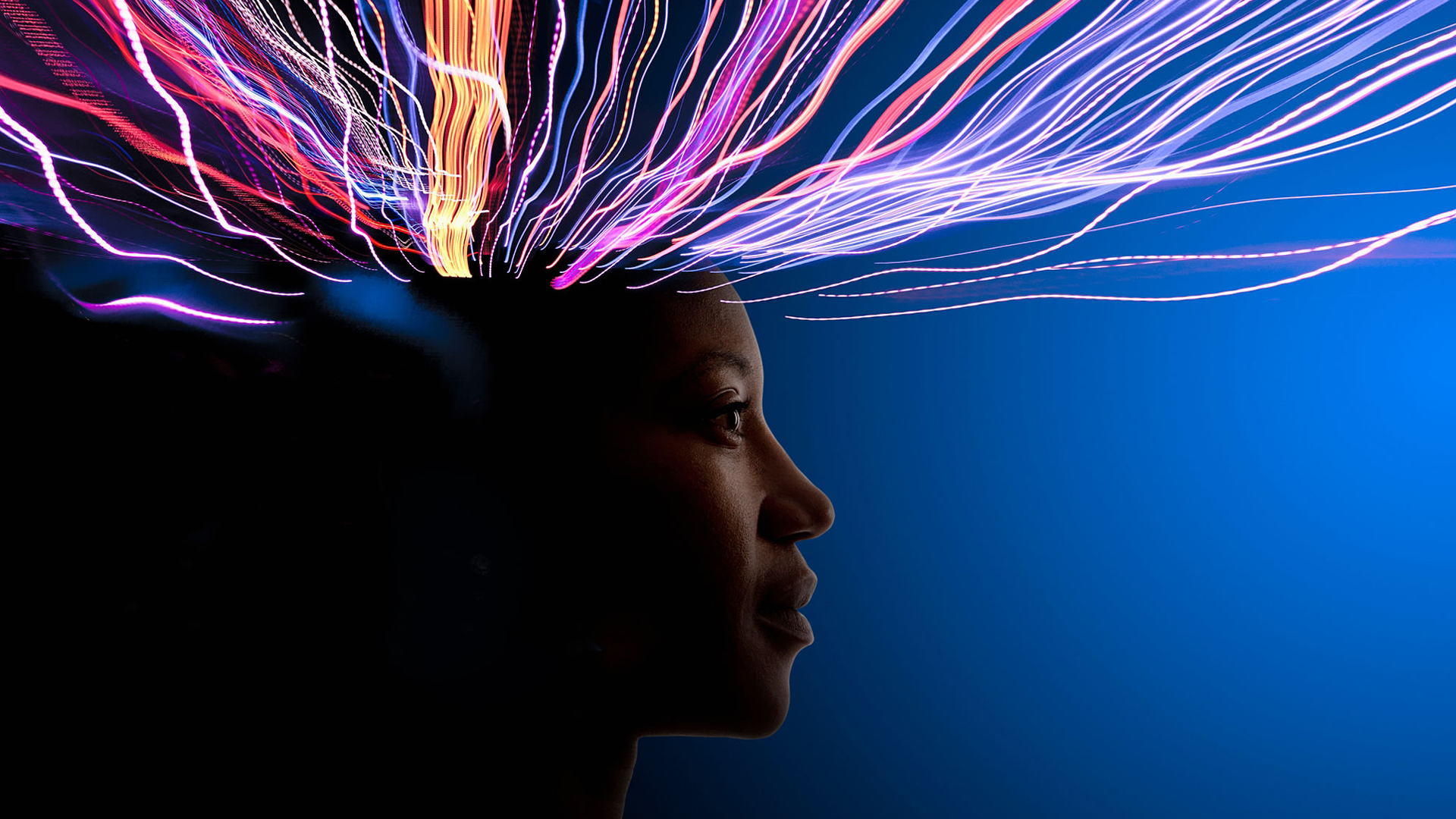
Executive Summary
- Educational Neuroscience, Neuroeducation, Mind, Brain, and Education or Learning Science are different labels used to describe the emerging interdisciplinary field aiming to translate findings on neural mechanisms underlying learning into effective educational practice and policy making, and describe the influence of education in the anatomo-functional properties of the brain.
- However academically debated, the relevance of neuroscience for education is accepted worldwide and politics and educators remain keen to integrating its findings in decision making and pedagogical practice.
- The growth of the field has led to the establishment of new international societies, scientific journals, postgraduate courses, funding schemes and international initiatives to operationalize and articulate the impact of scientific evidence in education and society.
- Although translation is an extended process, some initiatives, showing promising reference for future implementation or generalization at different scales are presented here.
Introduction
However academically debated1-6, the relevance of neuroscience for education is accepted by policymakers and teachers worldwide. It seems intuitive that understanding the mechanisms underlying the ways the brain selects, retains, stores, retrieves and associates information, creates representations about the environment and uses them to regulate emotions, behaviour and solve problems of striking variety may inform teachers regarding the optimal design of a learning experience for the students. In addition, its relevance seems apparent to policymakers as a foundation for informed-decision making regarding the selection of curricular designs, remediation programs or technologies to be introduced to a school, a district or a national educational system.
Since it has been rightfully pointed out that no classroom-ready knowledge from neuroscience is ever likely to exist7,6, several (fantastic!) initiatives, at different scales, have endeavour to operationalize and articulate the impact of scientific results in education and society and show promising reference for future implementation.
International Societies and Scientific Journals
The International Mind, Brain and Education Society (IMBES; www.imbes.org) founded in 2004, pioneered the academic movement on translational research in how the brain mechanisms support learning6. It holds biennial conferences and fosters dynamic relations between neuroscience, genetics, cognitive science, development, and education so that each field benefits from and influences work in the others.
One of the two most cited Learning Sciences scientific journals, the Mind, Brain and Education Journal (MBE)( https://onlinelibrary.wiley.com/journal/1751228x) is the official forum of IMBES. Together with Trends in Neuroscience and Education (https://www.journals.elsevier.com/trends-in-neuroscience-and-education) showcases the efforts for bridging neuroscience and education, ranking in the first quartile of the Scopus Database, one of the largest scientific citation databases of peer-reviewed literature (https://www.scopus.com).
MBE focuses in the accurate translation of research results from biology, brain, and behaviour into applications aiming to impact education efforts internationally. According to SCOPUS; in the Subject Area Social Sciences, among the Education journals, MBE is journal is #203, out of 1254 in all. In the Subject Area Neuroscience, in the classification Cognitive Neuroscience, the journal is #59/95. In the Subject Area Psychology, in the classification Developmental and Educational Psychology, MBE is #109/327 and among the Experimental and Cognitive Psychology journals, it is #71/145.
Trends in Neuroscience and Education, ranking higher than MBE; focuses in original translational research on using systems neuroscience findings to improve educational outcome and reviews on basic and applied research relevant to education. According to Scopus, in the Subject Area Social Sciences, in the classification of Education this journal is #175/1254. In the Subject Area Neuroscience, in the classification Cognitive Neuroscience, the journal is #57/95. In the Subject Area Neuroscience, in the classification Neuroscience (miscellaneous) is #15/24 and in the Subject Area Neuroscience, classification Behavioral Neuroscience the journal is #45/73. Note that, however useful as reference sources for professional development, these journals’ statistics do no warrant impact in educational practice nor did they reflect the actual proportion of articles that is in fact, useful for educators and policy makers.
Networking Initiatives and Funding Schemes
Two relevant networking initiatives significantly contributed to influence new generations of neuroscientists in bridging the gap of Neuroscience and Education: the NUMBRA Training Network (2004-2007) and the Latin American School for Education, Cognitive and Neural Sciences (LA School) (2011-2016). NUMBRA: Numeracy and brain development was a 3-year Marie Curie Research Training Network funded by the European Economic Community (MRTN-CT-2003-504927). The network was coordinated by the University College London, UK, and included research groups from France, Finland, Austria, Germany, Italy and Belgium, with a major participation of European young researchers. The network was oriented to discuss state of the art in learning disorders, with a focus in Developmental Dyscalculia; and the neuroimaging methods and interventions applied to typical and atypical brain development.
LA School was inspired by the ideas raised in The Santiago Declaration (https://www.jsmf.org/santiagodeclaration/signatories.php) regarding the necessity that policies, standards, curricula, and to the extent possible, commercial ventures be based on the best scientific research and be sensitive to evidence-based practice. The initiative was funded by the James S McDonnell Foundation (JSMF), USA, and included a series of six schools dedicated to foster a new generation of scientists able to operate at the interface between Education and Neural Sciences (figure 1)8 (an additional LA School was organized in 2018, after the original project finalized, with partial financial support from the JSMF). LA School provided unique opportunities for young Latin-American researchers to interact with international neuroscience leading experts, and participate in collaborative projects. More than 300 young researchers have found their way into translational research via LA School and are since immerse in Educational Neuroscience9.
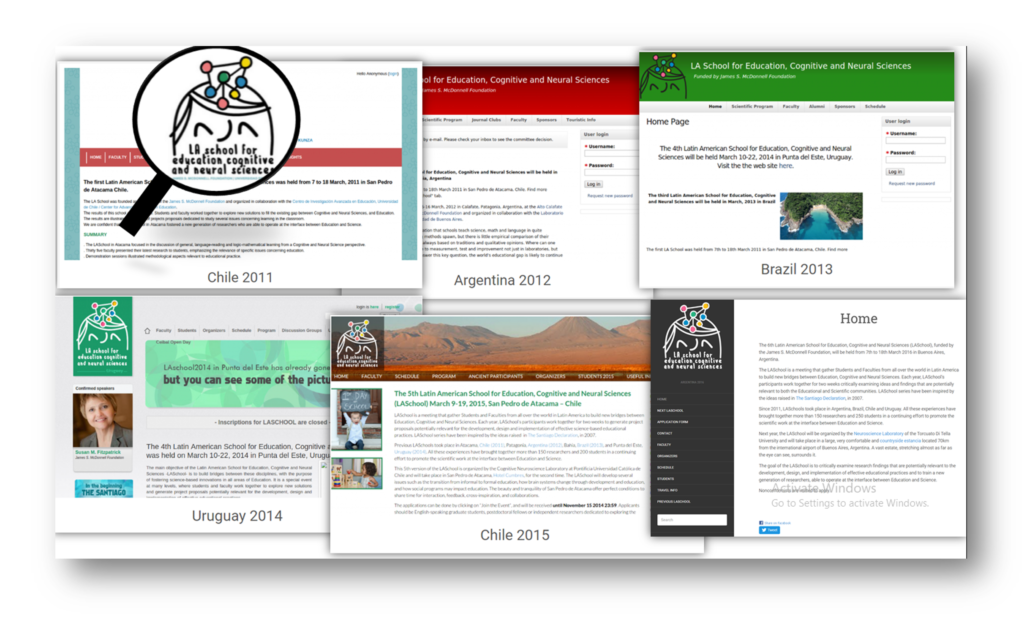
Figure 1. Collage of websites of the Latin American Schools for Education, Cognitive and Neural Sciences (2011-2016).
Another interesting networking initiative is the National Science Network for Education (Rede CpE, http://cienciaparaeducacao.org/) in Brazil, RCpE was created in 2014 by a group of 30 scientists from Brazilian universities and now includes 135 members. The network aims to bring together researchers from not only Neuroscience, but from 21 scientific fields that are deemed strategic to promote best practice and evidence-based educational policies. CpE included the implementation of Plataforma CpE (http://plataforma-cpe.org/), which allows finding Brazilian researchers and educators working at the intersection of science and education, and their corresponding publications. Additionally, they have create opportunities for researchers, educators and administrative staff to discuss the political and practical applications of the science of learning and support and conduct research on learning and teaching in educational settings.
On the other hand, also in 2014, the Education Endowment Foundation, UK and the Wellcome Trust, launched an “Education and Neuroscience Scheme”, in order to provide funding for collaborative projects between educators and neuroscientists, focused in developing evidence-based interventions to be used in the classrooms10. This funding scheme supported several strategic areas for the developing field, including the impact of sleep patterns in teenagers’ academic achievement, the impact of medium to high cardiovascular activity on academic achievement, the impact of training inhibitory control on children’s achievement in mathematics and science, the effectiveness of ‘spaced learning’ (repeating a unit of work three times interspersed with alternative activities), the effectiveness of uncertain reward on attainment in science and the impact of a computer game training phonological awareness in reading6,10.
In 2015, the International Brain Research Organization (IBRO) and the International Bureau of Education (IBE) of the United Nations Educational, Scientific and Cultural Organization (UNESCO) launched the 6-years initiative IBRO/IBE-UNESCO Science of Learning Fellowships (https://ibro.org/ibro-ibe-unesco-science-of-learning-fellowships-2020/). This is part of the IBRO Science of Learning effort to support and translate key neuroscience research on learning and the brain to educators, policymakers, and governments. As a result of this initiative, IBE-UNESCO created a portal, available worldwide, that makes accessible more than 50 technical documents in which relevant neuroscientific research has been translated for educators and policy makers, highlighting the specific implications and potential applications of scientific evidence for education (figure 2, http://ibelearning.wpengine.com/).
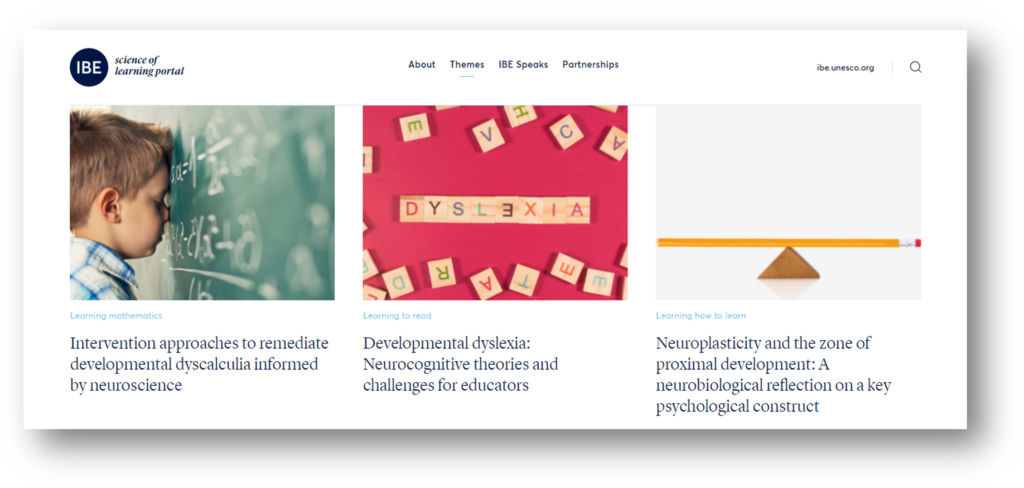
Figure 2. IBE-UNESCO Science of Learning Portal.
Playful Learning Landscapes: A natural experiment initiative
The Playful Learning Landscapes program (https://playfullearninglandscapes.com) merges the latest evidence from the science of learning with a global movement that endeavours to make cities more livable and friendly to families11. The initiative is based in Philadelphia, USA, and focuses in promoting the kinds of caregiver-child interactions that promote strong learning. Following the Learning Landscapes Theoretical Model11 (figure 3) the alliance of researchers and community members aims to equip parents and educators with the contexts and tools they need to support children to develop the required skills to thrive in school and life11-15; by infusing spaces where children and families spend time with science of learning-informed designs.
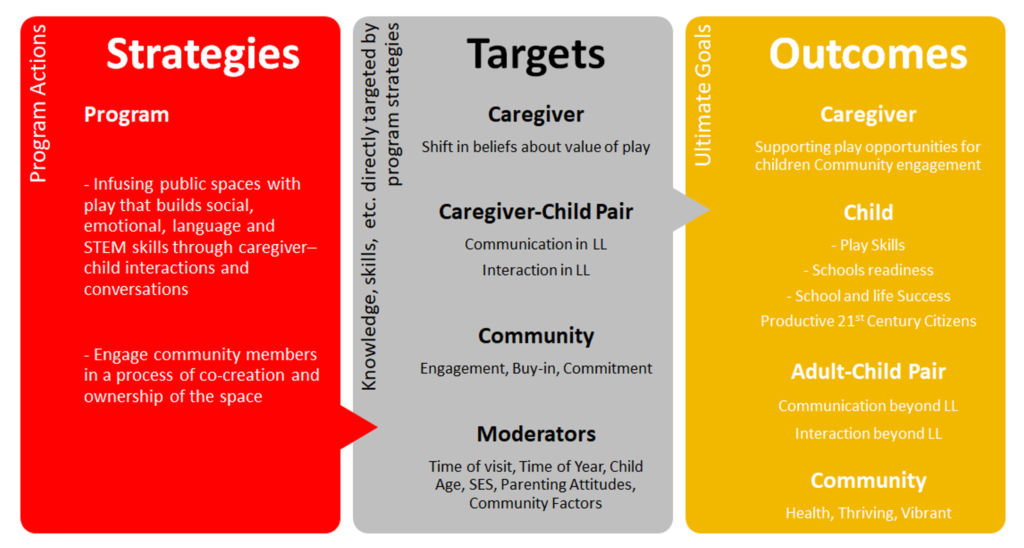
Figure 3. Learning Landscapes Theoretical Model12. Note: LL: Learning landscapes, SES: Socioeconomic Status.
With the support of communities, the researchers transformed public spaces (grocery stores, parks) into playful learning venues (playful learning includes three types of play: free play (no direct adult involvement), guided play (developmentally appropriate support by adults toward a learning goal), and games (rule-based activities with targeted or tangential learning goals)16,11). The program aims to foster STEM17 (science, technology, engineering, and math) foundational skills and the so-called 21st century learning skills (e.g., communication, collaboration, critical thinking, exploration, creative innovation, and confidence) by capitalizing on the recognized contribution of playful learning to cognitive and social development12,14.
The program has implemented different creative and affordable initiatives. In one of them, the Supermarket Speak project, researchers posted signs in the dairy and produce aisles of Supermarkets located in low- and middle- socioeconomic status neighbourhoods, showing examples of questions parents could ask their children while they shop, and kept record of the amount of parent-child interactions (gestures, conversational turns), before and after the signs were posted. The results of the study showed a 33% increase in interactions when the signs were installed in low SES stores (Ridge et al., 2015).
Another project, Urban Thinkscape, aimed at infusing a public space with the latest results in learning science to promote child-caregiver interactions and conversations and stimulate specific cognitive processes, including cognitive flexibility, inhibitory control, narrative skills and early spatial and math skills. Also, the project resulted in major involvement of the community in the design process, offered job training, employment opportunities, and brought about a sense of pride and ownership to the community. Compared to a traditional playground in the same neighbourhood, the Urban Thinkscape produced significantly more language and parent– child interaction19.
Finally, they developed Parkopolis, a life-sized board game for public play areas that affords opportunities for STEM learning. To play, children roll a dice and draw cards specifying the activities to complete to advance around the board. The activities train learning skills including working with patterns, numeracy and spatial skills, geometry, measuments and working with fractions. Additionally, it trains working memory, cognitive flexibility, inhibition, strategic planning, persistence, open-mindedness, sustained focus, communication, cooperation, logical thinking and problem solving. Two pilot studies conducted showed that children and parents playing Parkopolis used significantly more STEM language (e.g., whole number, fraction, spatial, and measurement language), made more observations and showed greater engagement, than children in a control condition11,20.
The research team aims to transform Philadelphia in the first playful learning city by scaling up this natural experiment for informal learning, with the potential to enhance educational outcomes for all children, and especially for low-income children, who usually have limited access to STEM oriented experiences11.
Du labo à l’école: A participatory science initiative.
Citizen or participatory science, a methodology traditionally used in scientific domains demanding massive data collection, was recently employed to bring the communities of neuroscientists and educators closer together. This approach is characterized by collaboration between researchers and non-researchers on a project. Levels of participation of non-researchers in the projects range from data collection to definition of research problems and methodological design and materials, in co-constructed projects21.
LaPsyDÉ (Laboratoire de Psychologie du Développement et de l’Éducation de l’enfant; CNRS, University Paris Descartes) endeavored in 2017, in the first participatory science initiative including teachers. The project, still in progress, involves 130 teachers running a co-constructed study in their classrooms (some 3600 students in all).
The project relied on the cooperation with Lea.fr (www.lea.fr– Nathan©), a collaborative pedagogical online platform used by some 90 000 primary teachers in France23. The project aims to address errors children make frequently in class, and at the same time contrast the validity of neurosciences findings regarding the relevance of cognitive inhibition (a prefontal cortex function allowing to ignore irrelevant information or automatic responses) to learning. In particular, the study addressed errors that could be explained by a a lack of inhibitory control over erroneous automatisms and deceptive heuristics, following the 3-system theory of the Cognitive Brain (figure 4)24. Also, the team aims to assess the feasibility of involving teachers in the design of pedagogical interventions to improve inhibitory control and compare the intervention effects with those of studies carried out under traditional laboratory conditions23.
Teachers enrolled and received professional training through Lea.fr on inhibitory control and scientific methodology (including the relevance of teachers to remaining neutral, follow the standardized protocol and resist the urge to provide extra support to children during the 5 weeks of the study). Teachers co-designed the study with the researchers, randomly assigned, in their classrooms, children to the experimental training or the (active) control group, identified errors to be addressed in different subjects and selected and validated the interventions proposed by the LaPsyDÉ team. Finally, the teachers collected data on the inhibition skills of both groups before (pre) and after the intervention (post-test) and ran the daily training activities in the classroom. Training sessions lasted 15 minutes.
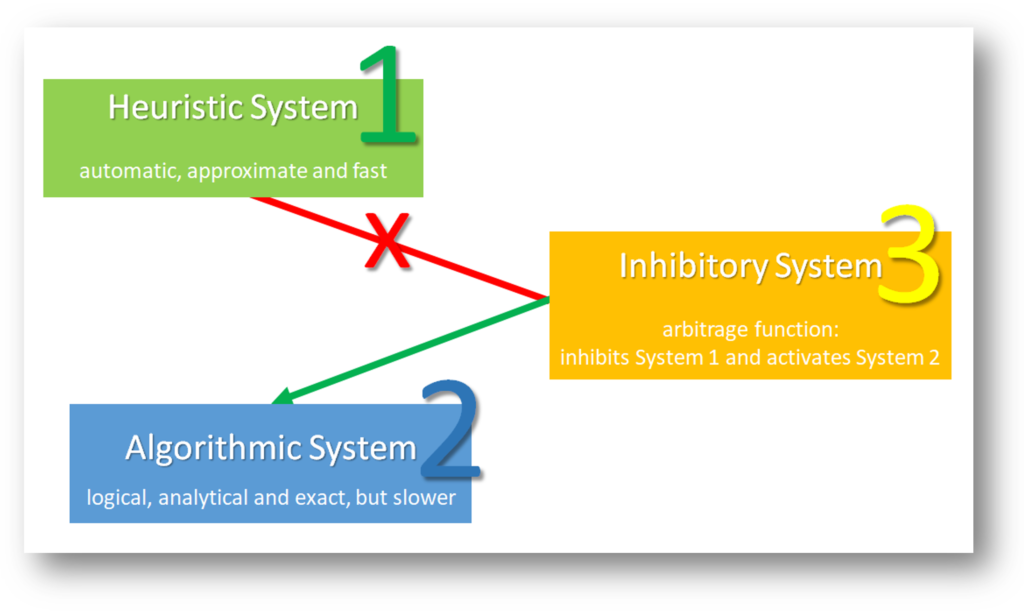
Figure 4. The three-systems theory of reasoning and learning24.
Following an ecological approach, (the study was adapted to the real classroom conditions), classical inhibitory control (Stroop test) pre and post-tests were translated into paper-and-pencil group-delivered, grade-appropriate versions. Additionally, training was delivered not individually, but in small groups (the two subgroups) with the corresponding classroom layout and dynamics adjustments.
The results of the first year of the project showed a significant increase on inhibitory control in the experimental group (but not the control group) at the end of the pedagogical intervention. The size of the intervention effect was similar to that of previously reported interventions under classical experimental conditions. This provided the first evidence that is possible to translate experimental methods into ecologically appropriate pedagogical practice, and use it to improve cognition and shed light in extant theories of brain development and learning, without the direct intervention of researchers. In addition, participatory science has the potential to improve the scientific knowledge of teachers involved in this type of projects22. Hence, it seems a suitable avenue to influence professional development, pedagogical practice and educators’ mindset.
OptimAprendizaje: A “Precision Education” Initiative.
The Educational Neuroscience Laboratory, at the Cuban Neurosciences Center (CNEURO), Cuba, developed OptimA Aprendizaje, a suite of computerized tools that serves as backbone for the implementation of a school-centered program dedicated to the protection of neurocognitive development (SBND program)25. The program draws from previous research conducted in Cuba regarding the prevalence26 and contribution of core cognitive processes to academic achievement in populations with typical and atypical neurocognitive profiles, with a focus in children with developmental learning disorders (LD)27-35.
LD are characterized by significant and persistent difficulties in learning academic skills, including reading, writing, or arithmetic. Academic performance is markedly below expected for age and intellectual functioning, they usually manifests during the early school years. They are not better explained by sensory impairments or intellectual, neurological or motor disorders, lack of educational opportunities or proficiency in the language of academic instruction, or psychosocial adversity36-37.
The SBND program aligns with the “Precision Education Initiative” for the attention of children at risk of LD38. Precision education extends the goals of precision medicine regarding the individualization of treatment and prevention based on genes, environment, and lifestyle; to the classification and treatment of learning disorders, including the design of educational interventions. The SBND program supports the detection of children at risk of learning disorders, the cognitive characterization of them and the design of personalized stimulation and intervention strategies. Additionally, it includes an e-learning environment for teacher training in educational neuroscience27.
The tools implemented include mobile device-supported questionnaires for the identification of signs of risk of core neurocognitive deficits associated with poor achievement on reading and mathematics and a computerized battery for detailed individual neurocognitive profiling that allows precision and accuracy in the assessment27. These computerized tools were developed as” client-server applications. Note that the screening tools do not need expert evaluators, but teachers who receive training in science of learning and ICT can use the SBND applications, installed in smartphones or tablets, for identifying children at risk of atypical neurocognitive development.
The intervention “toolbox” includes a psico-pedagogical recommendations manual for addressing individual differences in the classroom and theoretically grounded video games for cognitive training. Following the neurocognitive strengths and weaknesses identified, personalized intervention strategies are designed to be implemented in the classroom, in line with the goals of precision education. Monitoring of the students’ progress following interventions is also possible, by reusing the screening and assessment tools originally employed.
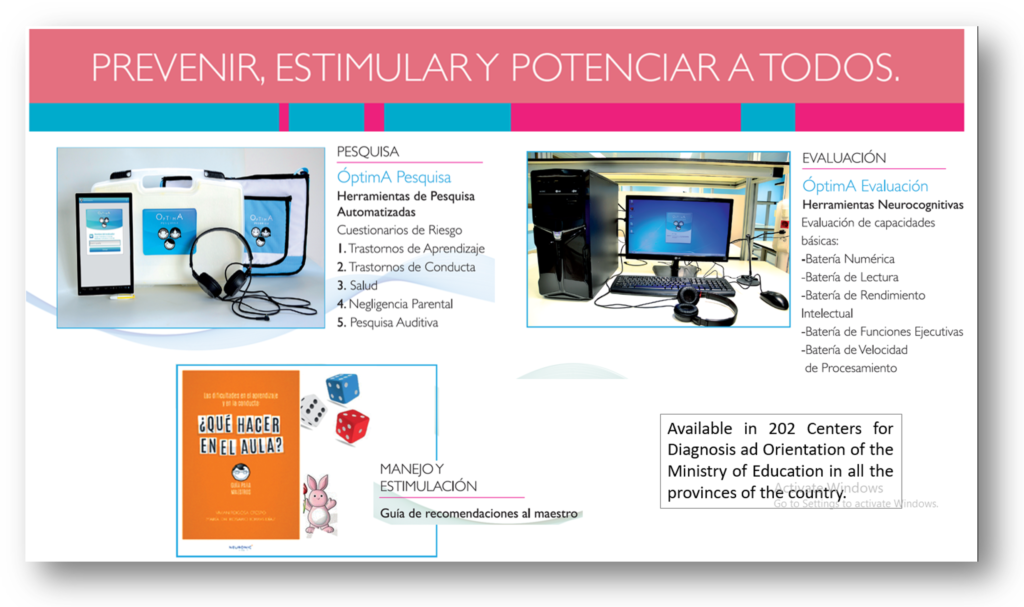
Figure 5. OptimA Aprendizaje, designed by the Cuban Neurosciences Center.
The program, declares to undertake an ecological approach27. It is designed around the schools, considering the organizational architecture of the Cuban Ministry of Education, which includes a network of Diagnosis and Orientation Centres, tasked with the responsibility of coordinating the attention of children with special educational needs in their municipality’s schools and guarantee the methodological orientation of the teachers under their jurisdiction. In turn, the program aims to improve everyday educational processes and educational outcomes, by affording the evaluation tools and contributing to the professional development of CDO’s specialists and teachers.
Implications for education.
The legitimate interest of policy makers, educators and parents in an evidence-based education and the attractive marketing efforts commercial companies deploy to present new scientifically endorsed products might encourage optimistic views on the advances in the implementation of basic research findings outside the lab. Although translation is an extended and sometimes iterative process, the initiatives presented here suggest some future directions including (but not limited to): 1) Undertaking an ecological approach to capitalize informal learning opportunities, 2) Implement early screening programs involving the family and reliable neurocognitive profiling tools to support precision education, and 3) develop a participatory science of learning, with teachers as a cornerstone for (neuro)science translation and outreach.
References
- Bruer, J.T. (1997). Education and the brain: A bridge too far. Educational Researcher, 26, 4–16.
- Bruer, J. T. (2016). Where Is Educational Neuroscience ?. Educational Neuroscience, 1, 1-12. doi: 10.1177/2377616115618036.
- Bishop, D.V.M. (2014). What is educational neuroscience? Available from: https://figshare.com/articles/What_is_educational_neuroscience_/1030405
- Bowers, J.S. (2016). The practical and principled problems with educational neuroscience. Psychological Review, 123, 600–612.
- Howard-Jones, P., Varma, S., Ansari, D., Butterworth, B., De Smedt, B., Goswami, U., . . . & Thomas, M.S.C. (2016). The principles and practices of educational neuroscience: Commentary on Bowers. Psychological Review, 123, 620–627.
- Thomas, M. S. C., Ansari, D., & Knowland, V. C. P. (2018). Annual Research Review: Educational neuroscience: progress and prospects. Journal of Child Psychology and Psychiatry. doi:10.1111/jcpp.12973
- Howard-Jones, P.A. (2010). Introducing neuroeducational research: Neuroscience, education and the brain from contexts to practice. Abingdon, UK: Routledge.
- Bruer, J.T. (2014). The Latin American School on Education and the Cognitive and Neural Sciences: Goals and challenges. Trends in Neuroscience and Education 3, 1–3.
- Pincham, H. L., Matejko, A. A., Obersteiner, A., Killikelly, C., Abrahao, K. P., Benavides-Varela, S., … Vuillier, L. (2014). Forging a new path for Educational Neuroscience: An international young-researcher perspective on combining neuroscience and educational practices. Trends in Neuroscience and Education, 3(1), 28–31. doi:10.1016/j.tine.2014.02.002
- Howard-Jones, P.A. (2014). Neuroscience and education: A review of educational interventions and approaches informed by neuroscience. London: Education Endowment Foundation.
- Bustamante, A. S., Hassinger-das, B., Hirsh-pasek, K., & Golinkoff, R. M. (2019). Learning Landscapes: Where the Science of Learning Meets Architectural Design. Learning, 13(1), 34-40. doi: 10.1111/cdep.12309.
- Hassinger-das, B., Palti, I., Golinkoff, R. M., Hirsh-, K., & Hassinger-das, B. (2019). Urban Thinkscape: Infusing Public Spaces with STEM Conversation and Interaction Opportunities. Journal of Cognition and Development, 00(00), 1-23. Psychology Press. doi: 10.1080/15248372.2019.1673753.
- Schlesinger, MA & Hirsh-Pasek, K. (2019) Playful Learning Landscapes: Creating skill-building experiences in community spaces, Childhood Education, 95:4, 3-9, DOI: 10.1080/00094056.2019.1638704
- Zimmermann, B. L., Foster, L., Golinkoff, R. M., & Hirsh-pasek, K. (2019). How Playing with Blocks Supports Early Math. American Educator, 22-27.
- Schlesinger, M. A., & Hirsh-Pasek, K. (2019). Playful Learning Landscapes: Creating skill-building experiences in community spaces. Childhood Education, 95(4), 3–9. doi:10.1080/00094056.2019.1638704
- Hassinger-Das, B., Toub,T.S., Zosh, J.M., Michnick,J., Hirsh-Pasek, K., & Golinkoff, R. M. (2017). More than just fun: A place for games in playful learning. Infancia y Aprendizaje [Infancy and Learning], 40,191–281. https://doi.org/10.1080/02103702.2017. 1292684
- Christenson, J. “Ramaley Coined STEM Term Now Used Nationwide,” Winona Daily News, November 13, 2011
- Ridge, K. E., Weisberg, D. S., llgaz, H., Hirsh-Pasek, K., & Golinkoff, R. M. (2015). Supermarket speak: Increasing talk among low-socio- economic status families. Mind, Brain, and Education, 9,127–135. https://doi.org/10.1111/mbe.12081
- Hassinger-Das, B., Bustamante, A. S., Hirsh-Pasek, K., Golinkoff, R. M., Magsamen, S., Pearlman-Robinson, J., & Winthrop, R. (2018). Learning Landscapes: Can urban planning and the learning sciences work together to help children? Brookings Institution Policy Report. Washington, DC: Brookings Institu- tion. Retrieved from https://www.brookings.edu/research/learning- landscapes-can-urban-planning-and-the-learning-sciences-work- together-to-help-children/
- Hassinger-Das, B., Bustamante, A. S., Hirsh-Pasek, K., & Golinkoff, R. M. (2018). Learning Landscapes: Playing the way to learning and engagement in public spaces. Education Sciences, 8,74–96. https://doi.org/10.3390/educsci8020074
- Miller-Rushing, A., Primack, R., & Bonney, R. (2012). The history of public participation in ecological research. Frontiers in Ecology and the Environment, 10(6), 285 – 290.
- Bonney, R., Phillips, T. B., Ballard, H. L., & Enck, J. W. (2015). Can citizen science enhance public understanding of science? Public understanding of science, 25, 1–15.
- Houdé, O. & Borst, G. (2018). Le Cerveau et les apprentissages. NATHAN FERNAND, Collection les Repères Pédagogiques, pp. 335. ISBN 9782091246406 (2091246409).
- Houdé, O. (2019). 3-system Theory of the Cognitive Brain: A Post-Piagetian Approach to Cognitive Development. Oxon, UK: Routledge., pp 134. ISBN 9781138069701.
- Reigosa-Crespo, V. (2019). Beyond the “third method” for the assessment of developmental dyscalculia. Implications for research and practice. Pp- In book: The International Handbook of Math Learning Difficulties: from the lab to the classroom. Springer International Publishing AG
- Estévez-Pérez, N., Castro-Cañizares, D., Martínez-Montes, E. & Reigosa-Crespo, V. (2019) Numerical processing profiles in children with varying degrees of arithmetical achievement. Acta Psychologica 198, DOI: 10.1016/j.actpsy.2019.05.001
- Benavides-Varela, S., Lorusso, R., Baro, V., Denaro, L., Estévez-Pérez, N., Lucangeli, D., D’Avella, D. & Semenza, C. Mathematical skills in children with pilocytic astrocytoma. Acta Neurochir (2019) 161: 161. https://doi.org/10.1007/s00701-018-3744-0
- Castro, D., Estévez, N., Gómez, D., & Dartnell, P. (2017). Reliability and Validity of Nonsymbolic and Symbolic Comparison Tasks in School-Aged Children. The Spanish Journal of Psychology, Julio-Diciembre 2016, 20, E75. doi:10.1017/sjp.2017.68
- Estévez Pérez, N., Alemán Gómez, Y., Mosquera Suárez, Recio Morales, B., Rodríguez Cápiro, M., Marine Isangue, R., López Inguanzo, J.M., Valdés Sosa, M. & Reigosa Crespo, V. (2016). Estudio de las propiedades morfométricas del Surco Intraparietal en niños con Discalculia del Desarrollo con déficits específicos en el proceso de subitización. Revista Neuropsicología, Neuropsiquiatría y Neurociencias, Julio-Diciembre 2016, Volumen 16, Número 3, pp. 53-74, ISSN: 0124-1265.
- Díaz-Simón, N., Estévez-Pérez, N., Góngora-Lleonart, D., Fernandez-Alonso, M., Reigosa-Crespo, V., & Orraca-Castillo, M. (2016). Brain white matter structures in Learning Disabilities in Neurofibromatosis type 1. International Journal of Psychophysiology, 108, 172. doi: 10.1016/j.ijpsycho.2016.07.493.
- Reigosa-Crespo, V., González-Alemañy, E., León, T., Torres, R., Mosquera, R., & Valdés-Sosa, M. (2013). Numerical Capacities as Domain-Specific Predictors beyond Early Mathematics Learning: A Longitudinal Study. PLoS ONE, 8(11), e79711. doi:10.1371/journal.pone.0079711
- Orraca-Castillo, M., Estévez-Pérez, N., & Reigosa-Crespo, V. (2014). Neurocognitive profiles of learning disabled children with neurofibromatosis type 1. Frontiers in Human Neuroscience, 8, 386. doi:10.3389/fnhum.2014.00386
- Reigosa-Crespo, V., Valdés-Sosa, M., Butterworth, B., Estévez, N., Rodríguez, M., Santos, E.,Torres, P., Suárez, R., & Lage, A. (2011, September 12). Basic Numerical Capacities and Prevalence of Developmental Dyscalculia: The Havana Survey. Developmental Psychology.Advance online publication. doi:10.1037/a0025356.
- Castro D., Estévez, N., Perez, O. (2011). Typical Development of Quantity Comparison in School-Aged Children. The Spanish Journal of Psychology, 14(1), 50-51.
- Sanabria G, Torres R, Iglesias J, Mosquera R, Reigosa V, Santos E, Lage A, Estévez N, Galán L. (2009): Cambios de estrategia lectora en niños de edad escolar. The Spanish Journal of Psychology, 12(2), 441-453.
- World Health Organization. (2018). International classification of diseases for mortality and morbidity statistics (11th Revision). Retrieved from https://icd.who.int/browse11/l-m/en
- American Psychiatric Association. (2013). Diagnostic and statistical manual of mental disorders (5th ed.). https://doi.org/10.1176/appi.books.9780890425596
- Hart, S. A. (2016). Precision Education Initiative: Moving Toward Personalized Education. Mind, Brain, and Education, 10(4), 209–211. doi:10.1111/mbe.12109